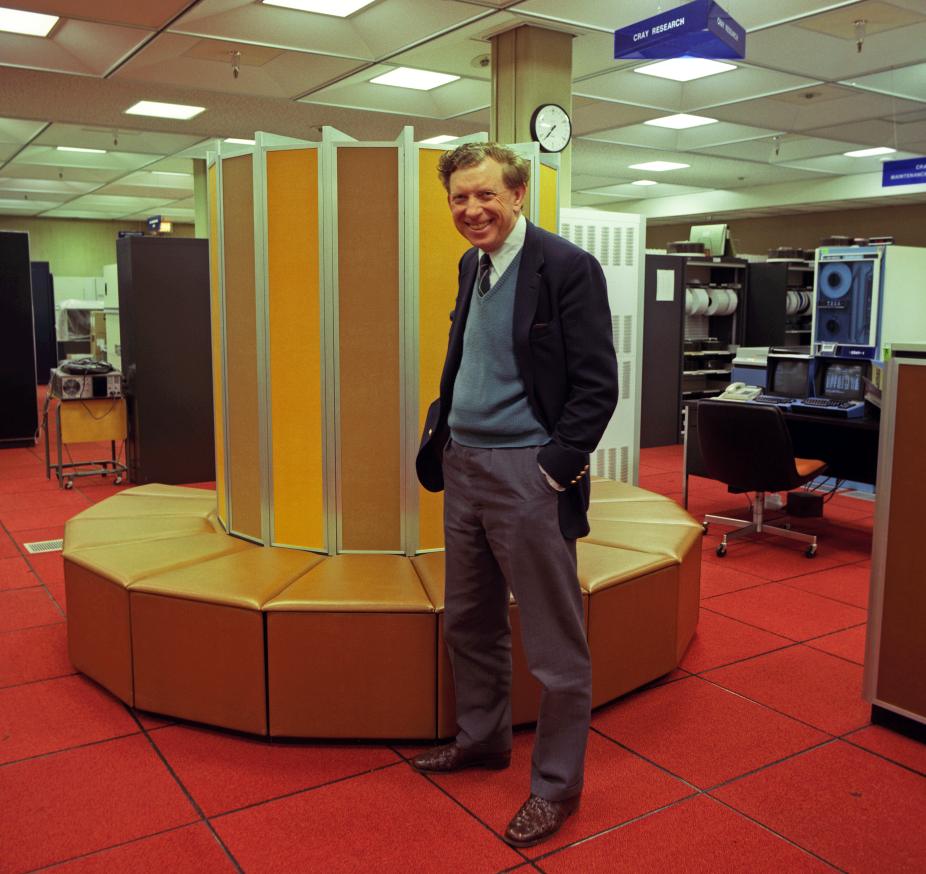CRI Cray-1A S/N 14

Walter Macintyre, who served as director of NCAR's Scientific Computing Division from 1980 to 1986, is shown here in front of the CRAY 1-A supercomputer (Serial #14).
Because of growth in user demand, NCAR's aging CDC 7600 system was replaced by a low-cost, previously owned Cray Research, Inc. (CRI) Cray-1A – serial number 14 – in May 1983.
The NCAR Scientific Computing Division and scientific community had engaged in a lengthy debate over whether it was more appropriate to bring in a fast scalar processor, because of the heavy data-processing component of the workload, or to get a second Cray-1A.
Proponents of the scalar processor felt that, with good I/O, it would be better suited for data processing, which was a significant percentage of the workload. Opponents felt the Cray would provide more numerical computing, even though it might be inefficient for the data processing necessary to support the atmospheric sciences. The scalar processor ultimately lost out to the second Cray-1A because of the latter’s price and its superior modeling capabilities.
NCAR's second Cray-1A – serial number 14 – was configured the same as its first. It had a 12.5-nanosecond clock, eight 64-element vector registers, 1 million 64-bit words (8 megabytes) of high-speed memory, and 16 DD-19 high-speed disk drives, each with a capacity of 300 megabytes and a transfer rate of 4.5 megabytes per second. The Cray-1A could chain floating-point vector add and multiply instructions together to produce two floating point operations (FLOPs) per clock; thus the Cray-1A had a peak speed of 160 megaflops.
The center’s second Cray-1A was obtained with U.S. Department of Energy funding. It was placed into service in May 1983 and decommissioned in October 1986 to make way for NCAR's first multiprocessor supercomputer, the CRI Cray X-MP.